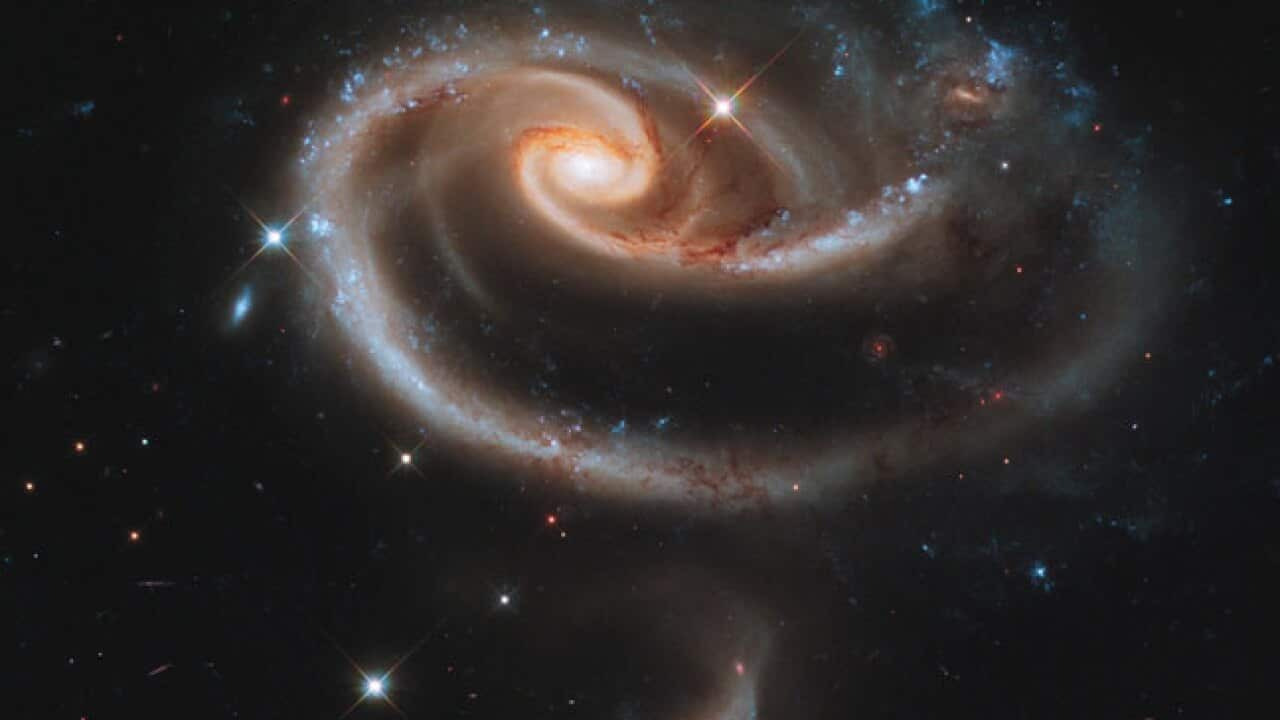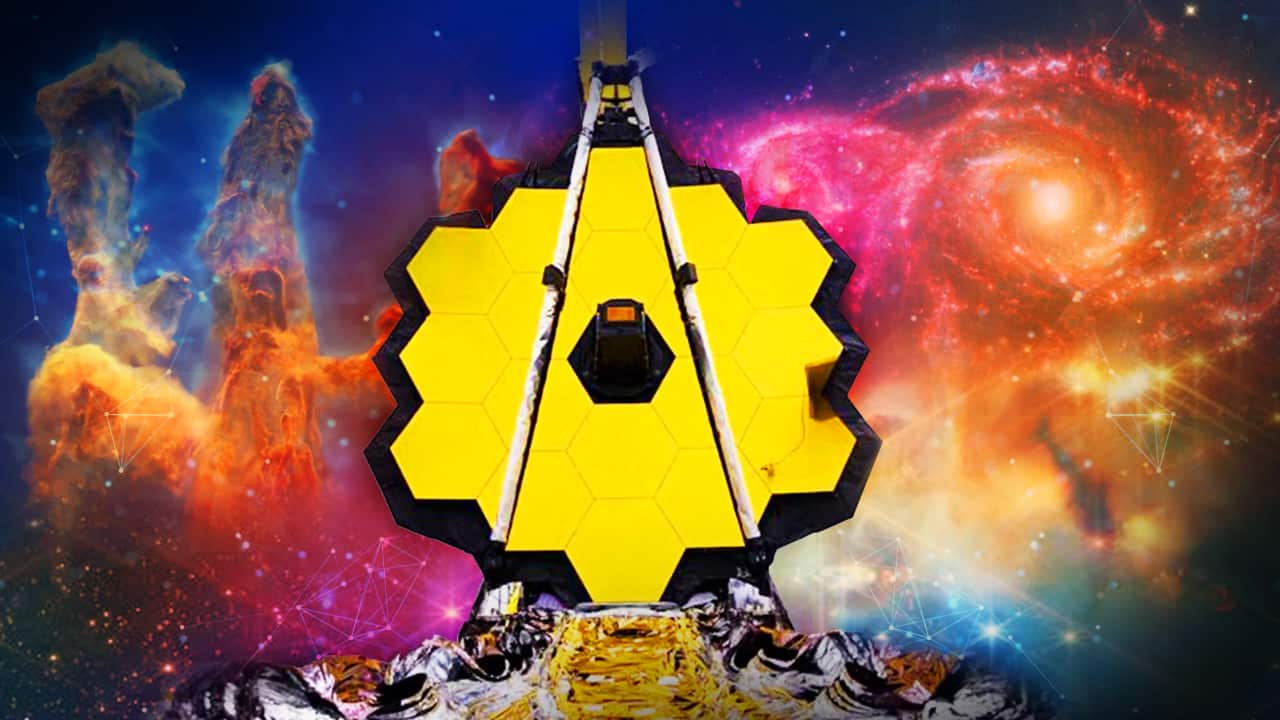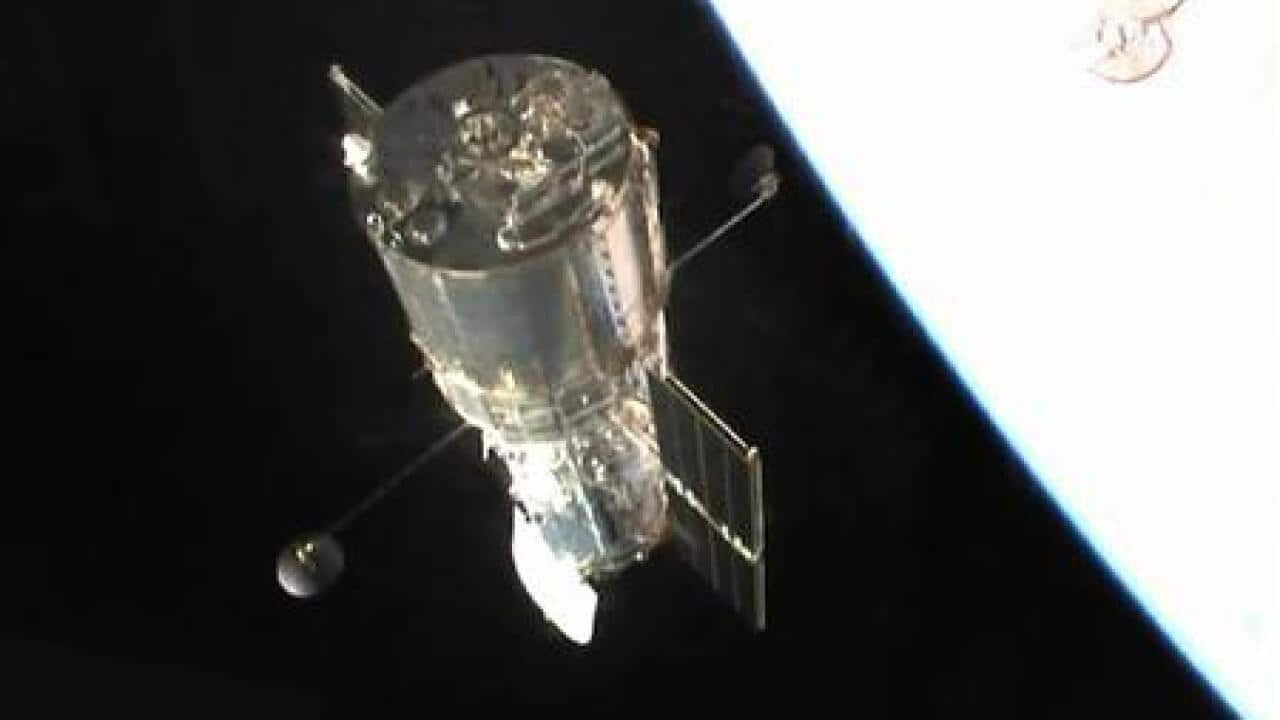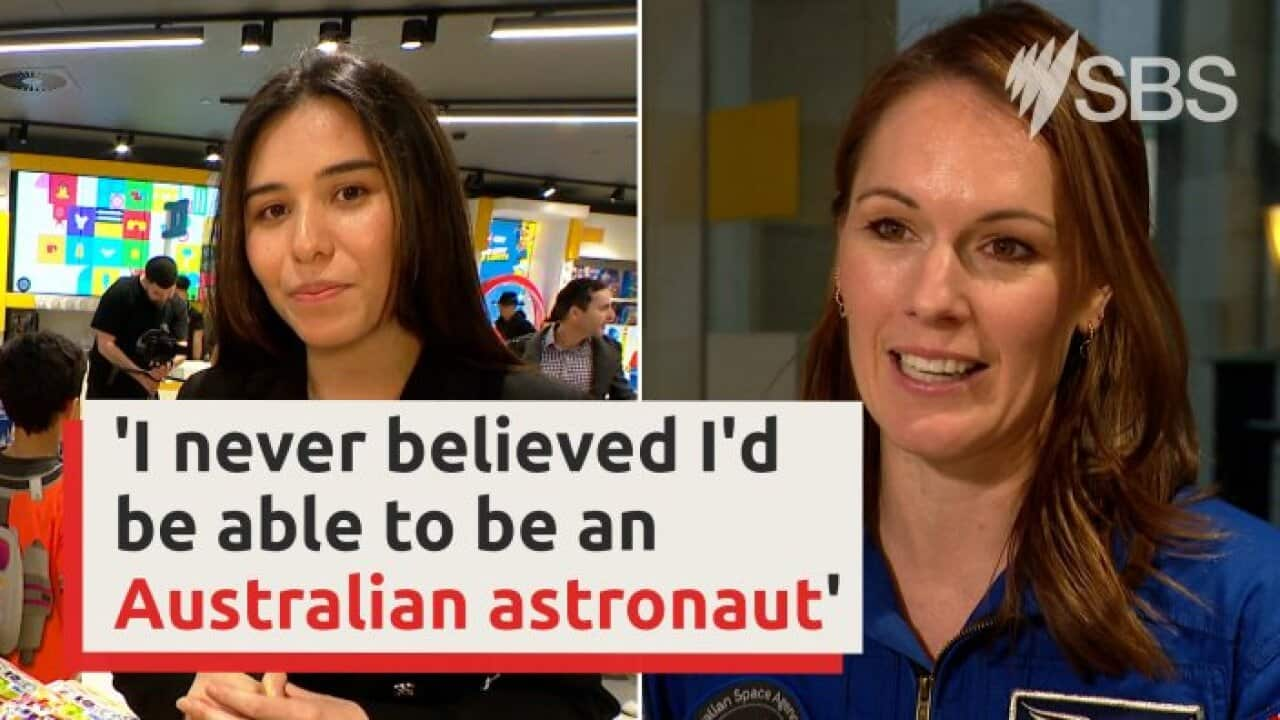Three years ago today the largest space telescope ever built was launched with an ambitious mission.
To see the earliest galaxies and stars formed in the universe.
Orbiting the Sun 1.5 million kilometres from the Earth, the James Webb Space Telescope (JWST) has looked back in time over 13 billion years.
The JWST is led by NASA with its partners the European Space Agency and the Canadian Space Agency.
Dr Laura Driessen, radio astronomer with the University of Sydney told SBS News she is amazed by its findings.
"Every time they release a beautiful new image, I just go, 'Wow, isn't that just amazing?'"
Understanding the origins of the universe
The JWST has made several incredible discoveries furthering our understanding of the universe.
Associate professor and astronomer Michael Brown from Monash University, who studies the evolution of galaxies over cosmic time, said the JWST has been used to study the most distant galaxies ever observed.
"We're seeing these galaxies not that long after the Big Bang. These galaxies are quite young, hundreds of millions of years old rather than billions of years old," Brown told SBS News.
"And these are some of the first galaxies that were formed in the universe."
While the telescope has helped scientists better understand space, more mysteries are being created.
"We're seeing a lot more galaxies than we were expecting, and they're a lot bigger than we're expecting," he said.
"This is producing a lot of head scratching amongst astronomers about how their galaxies could be built up so quickly, so soon after the big bang."

Looking like a broad-brimmed Mexican hat, the Sombrero Galaxy is a spiral galaxy observed through the James Webb Space Telescope. Source: AAP / ABACA/PA
"It [the observations] has been measuring of the atmospheres of other planets and to detect possible signs of elements that could be related to life," he said.
"Does it have an atmosphere? What is in that atmosphere? Are there signs of things in it, or is it hospitable?"
Tucker also highlighted the telescope's imaging technology.
"It's been able to see the Aurora on four other planets. This is really getting a lot more detailed than we've seen," he said.
"I like to say we've watched footy on the television before, but now that we've upgraded to the 4K television, it's a different watching experience."
Webb vs Hubble

This observation combines mid-infrared light from NASA's James Webb Space Telescope and ultraviolet and visible light from NASA's Hubble Space Telescope. The galaxies grazed one another millions of years ago. Credit: NASA
The Hubble was launched in 1990 and, from its vantage point, charted the evolution of galaxies, stars and planets.
Its televised images in the last century had a profound impact on the public's interest in space.
Tucker said the findings of Hubble and the JWST complement each other, but the latter is far more powerful.

The James Webb Space Telescope's deeper infrared vision cuts through the dust and gas of massive clouds where stars and planetary systems form. Credit: NASA
"James Webb is bigger than Hubble. Hubble has a mirror that is 2.4 meters across James Webb is six and a half meters, which is 10 times more powerful in terms of area than Hubble.
"That's allowing us to see some of the same stuff that Hubble is seeing, but either further away or in more detail."
The JWST can also see in colours of light that the Hubble cannot, allowing it to see different features from further away.
It has a larger primary mirror than the Hubble, which allows it to gather more dim and redshifted light and see objects up to 100 times fainter.
'Astounding' technology that can’t be fixed
The JWST is made up of several huge components, and its launch on 25 December 2021 was groundbreaking.
It comprises a primary mirror made of beryllium, an insulated sun shield and various instruments, including cameras and spectrometers.
"The launch and unfolding of the instrument are a bit of a revolution in technology; the heat shields that protect it all are massive, the size of a tennis court," Driessen said.
"They had to unfold all of that and make sure every stage worked smoothly. Otherwise, if one thing went wrong, that's the whole thing gone."

Made famous in 1995 by NASA's Hubble Space Telescope, the 'Pillars of Creation' in the Eagle Nebula, a stellar nursery, have captured imaginations worldwide with their beauty. This new image was taken by the James Webb Space Telescope. Credit: NASA
"We can't get to it. So, if it breaks, it breaks," she said.
What's next for the James Webb Space Telescope?
Driessen said with each new discovery, scientists are tweaking their theories and ideas to refine future studies on space.
"Galaxies and old galaxies and distant galaxies that JWST has revealed has kind of made us go, 'Oh, maybe we need to adjust our theories,'" she said.
"Details are becoming much clearer because of what JWST is revealing. But some things are becoming more confusing which means that we're getting closer to the truth."
READ MORE

Webb telescope may redefine history
Brown said the telescope has already achieved a lot in a short amount of time.
"James Webb has only been in orbit for a couple of years now, and I think what it's capable of and what it can be used for, we're only fully grasping its capabilities.
"I think as people better understand the telescope and how it works and how precise it could be, we'll get more and more exciting discoveries about planets beyond our own solar system."











